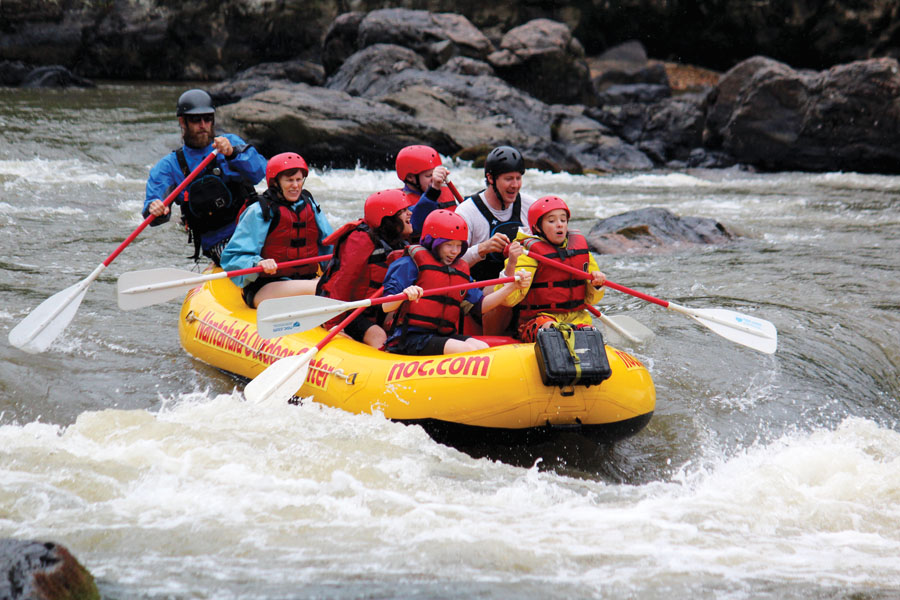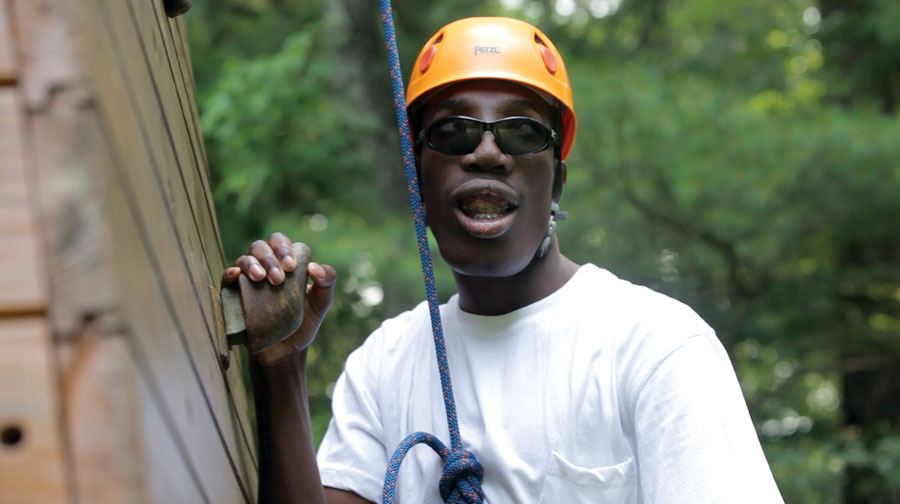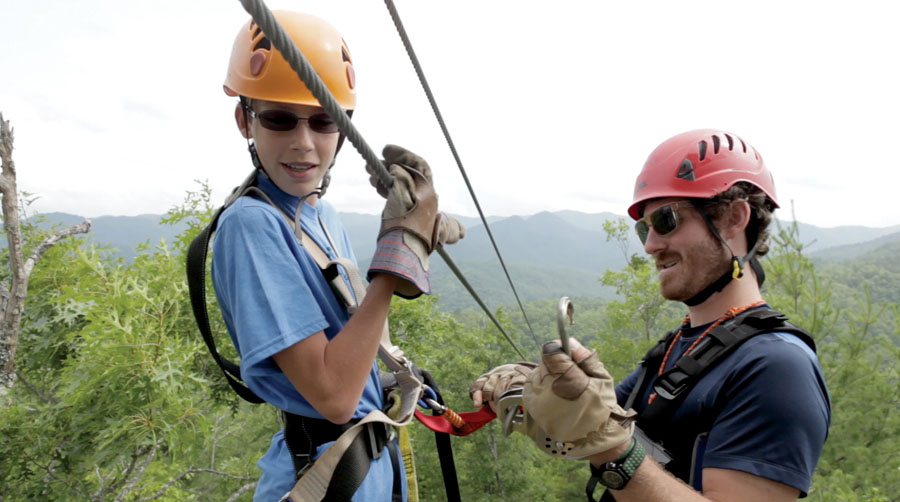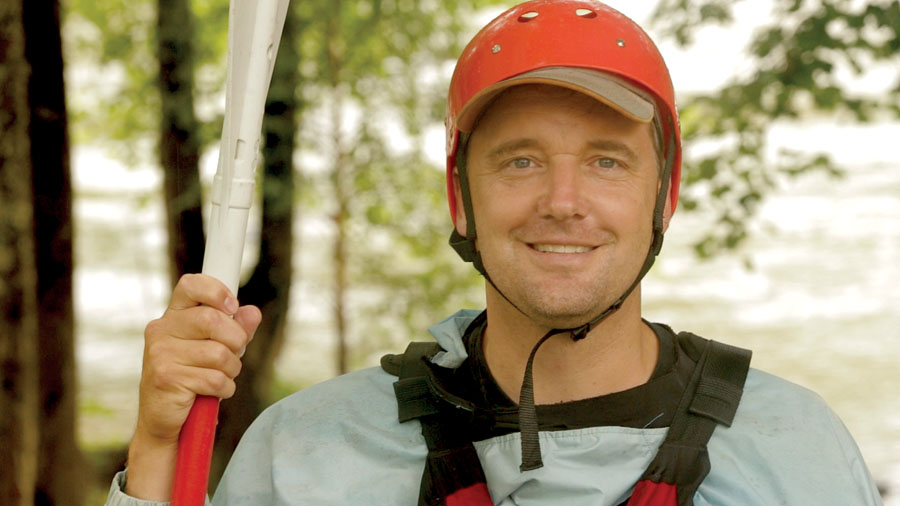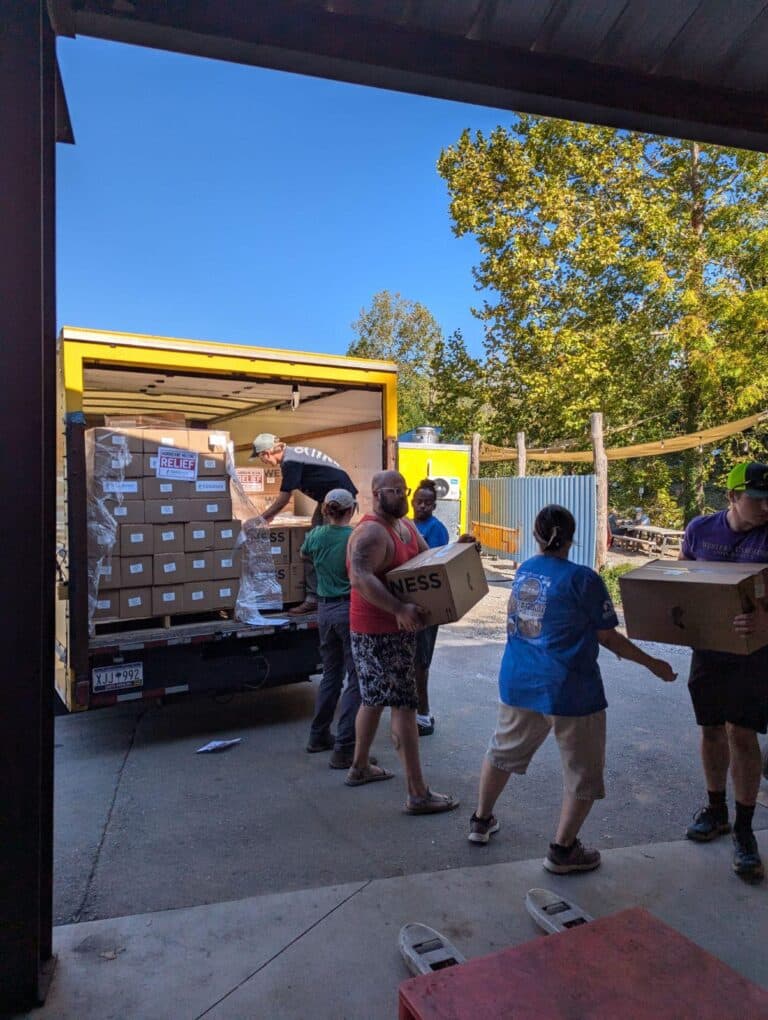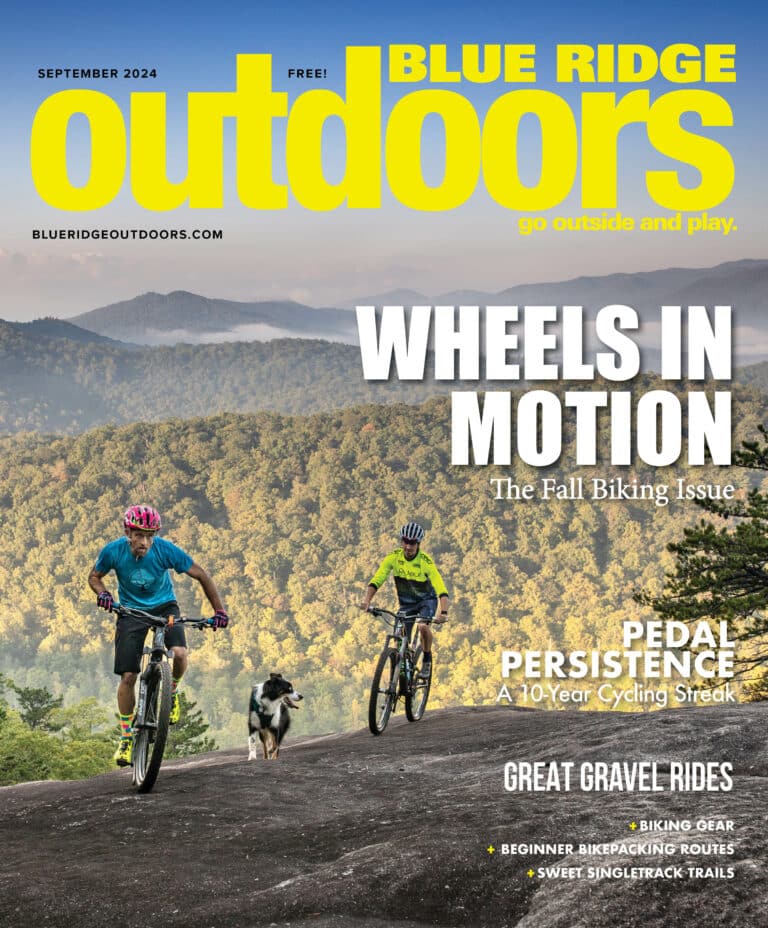Shareff is walking alone.
The other campers have gone ahead, scrambling, scuffling, stumbling up the trail, eager to find what lies around the next bend, but Shareff has fallen behind. His pace is slow, so slow that it’s hard to find a word for it. Deliberate doesn’t begin to describe it; plodding sounds too speedy by half. We’ll put it somewhere between a tortoise and a sloth. The reason: Shareff is paying attention. Close attention.
Shareff is blind, but that’s not unusual on this day. We’re at a camp for kids with no or low vision. Two of our hikers are totally blind, and two nearly so. The rest have visual impairments of varying scope and severity—severe enough, in most cases, to turn the leaves and rocks and roots of the woods into a blur of bright color and indiscriminate shapes. Still they are up ahead, halfway to the lunch spot, while Shareff still navigates the first five hundred feet of the Warren Wilson River Trail.
Shareff has been blind since birth. He has light perception, but no usable vision. He’s the first to admit he doesn’t spend much time in the woods. It’s a novel experience for him, a world truly wild, and so he pays attention. He’s paying attention with his feet: his light-soled sneakers help him feel the forest floor. He’s paying attention with his hands, collecting information with two trekking poles as he feels his way along the trail. But mostly he’s paying attention with his ears. He listens for the voice of his teacher, the song of the stream, the rustle of his peers shuffling into the distance. Above all, he listens to his clicks. All blind people use sound to orient themselves—the footfalls of a friend, the echo of a cane tip in an empty room—but Shareff is an active echolocator, clicking his tongue and waiting to hear the reflected sound, using a hundred tiny snapshots to construct an auditory image of the world around him.
Shareff has never been in woods so dense. When his clicks come back to him soft and muffled, he knows that the leaves are thick and close. And when he hears a short, sharp report, he knows he’s found the trunk of a large and sturdy tree—the kind it’s best to step around. He turns his head left-and-right, clicking to map the space around him, hearing the path ahead and using his trekking poles to confirm his impressions. He has not taken many steps, it is true, but he has taken each one of them alone. His teacher watches from a distance as Shareff makes his way over rocks and roots, upslope and down, taking stock with every step.
Other hikers will log more miles today, but it’s hard to imagine one more immersed in nature than Shareff is at this moment. This is why we came.
In June of this year, I launched an outdoor adventure camp for kids who are blind and visually impaired. It’s part of a family of camps run by A Brighter Path Foundation, collectively known as the SEE (Student Enrichment Experience) Camps. The camps are staffed by certified teachers for the visually impaired—together we have dozens of years of experience—and are the brainchild of Chris Flynt, the director of A Brighter Path programs, who lost his own vision to retinitis pigmentosa in early adulthood. The campers are kids we have met over the years, and our goal this week is to get them off the couch and into the woods—to hike, zip, climb, and raft in the wilds of western North Carolina.
Adults are constantly conspiring to plop kids into the backcountry, and we’re no exception. We do it for all the usual reasons: to build confidence and competence, to encourage teamwork, to improve problem-solving skills. Essential traits for all children, but perhaps more critical for the blind and visually impaired. Our campers grow up in a world that is skeptical of their skill. They hear too many messages of blindness as a disability, and live in a world of overabundant caution, with too many can’ts in the places of cans. Internalize this message, and it becomes all too easy to sit on the sidelines and let the world whirl by unheeded. In hitting the trail, we hope to fight this impulse: to expand possibility, reward curiosity, and nurture the spirit of adventure that beats in every heart.
And so we hiked, rambling down the River Trail and giving new meaning to the word treehugger. (Every now and then, our camper Jordan would give a nearby trunk a healthy squeeze, to better sense its size and shape.)
We zipped, soaring through the Nantahala River Gorge at speeds approaching fifty miles per hour, on lines up to a half-mile long. As each kid flew from view, and even the sighted teachers lost track of our charges, we tuned our ears to the tensile whine of the line, following each zipper’s progress by the pitch and volume of the returning sound.
We climbed, scaling a fifty foot vertical wall at the YMCA Blue Ridge Assembly, and found that wall to be a great equalizer. The sighted and blind alike struggled with floundering feet and outstretched fingertips, climbing higher through grit and grimace in equal measure, fueled by the shouts of our groundbound friends.
We floated, rafting down the ancient French Broad, our paddles dug deep and true, as the waves and ripples and eddies spoke from all sides in a constantly shifting soundscape. We smelled the rich and redolent bouquet of wild waters, of river rocks drying in the vanishing sun, and now and then felt the stray spray from the whitecaps alight upon our cheeks.
The bus ride back from the takeout was a sensory garden of its own: the thick smell of packed rafters on wet vinyl, the too-still breeze from half-jammed schoolbus windows, the wheeze and choke of diesel fumes, the obligatory raft guide jokes emanating from the front of the bus…we had all of this and more to savor as we snaked our way back to base camp.
All in all, it was a glorious week, a success by any measure. Our campers had a blast. They were active and engaged, heedless and reflective by turns, challenged and animated and triumphant. The same goes for the teachers. When it came time to say goodbye, we all walked away with a little more bounce in our step, a little more hope in our hearts.
There were plenty of priceless moments during the week—many set against soaring mountain scenery, accompanied by whoops of joy—but the picture I return to time and again is the quiet intensity of Shareff’s walk in the woods. While he never ventured further than a half-mile from the road, Shareff was in a wilderness unlike one I’ve experienced in quite a while. The trail was new to him, and strange, and he had little idea what lay five feet ahead. His approach was one that we would all do well to heed as we confront our own personal wilderness: neither fearful nor fearless, cautious but curious, open to what the world has to offer, and patient enough to listen to its call.
He knew what I once knew, and what I hope all our campers come to know in time: the world is open, wonderful, and wide. Dive right in.
Jay Hardwig is a certified teacher for the visually impaired and Orientation & Mobility specialist, and the Asheville manager of A Brighter Path programs. He can be reached at [email protected]
